I'm not afraid of snakes or spiders or bats, but every time I see those thrasher eyes they threaten to rekindle an atavistic fear somewhere deep within me.
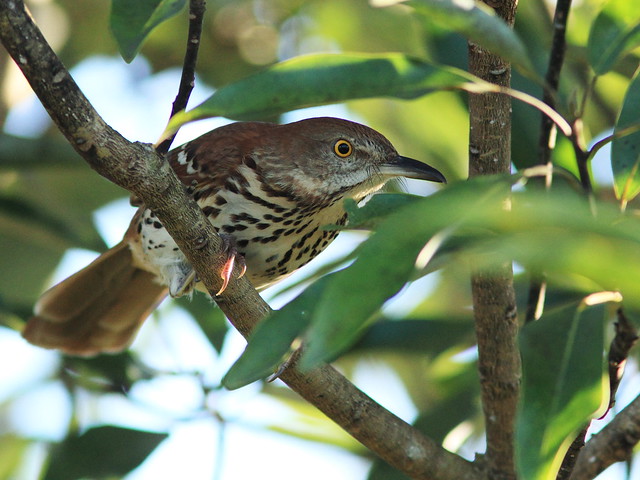
On February 12, at the entrance to Chapel Trail Nature Preserve near our South Florida home, I heard the distinctive double phrases of a thrasher's song. Similar enough to that of the related mockingbird's, it might be overlooked, but this bird's song seemed to overwhelm the sounds of its much more common relatives.
If the 30-second video does not appear in the space below, follow this link
A few Brown Thrashers nest in our general area but so far they have appeared locally only during migration and winter.
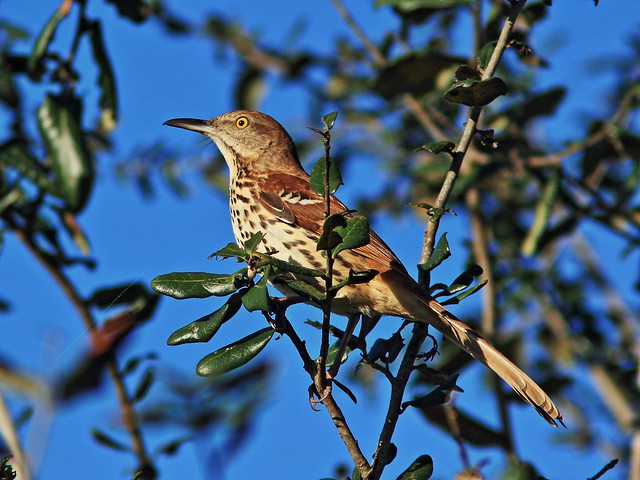
Alert and often secretive, their brown backs sometimes look so red that when one flashes by I can mistake it for a cardinal.

Thrashers are more often heard than seen, either because of their distinctive loud song and calls, or by the noise they create while "thrashing" about in leaf litter, scratching with both feet to uncover insect prey. It is nice to find one out in the open...

...but in many of my photos they are obscured by foliage.
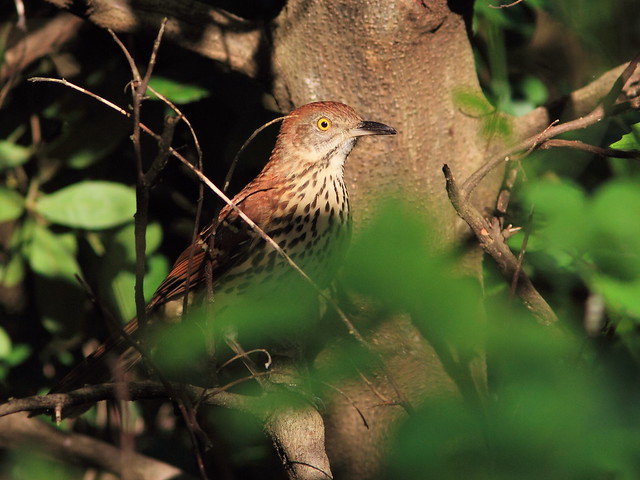
Actually, the thrasher may have gotten its name, not because of any wild and violent movement on its part, but from an old English word, "thresher" or "thrusher," meaning a thrush. REFERENCE
Indeed, mockingbirds, catbirds and thrashers are grouped in the family Mimidae, or Mimic Thrushes. Their body and bill profiles are all quite similar.
Northern Mockingbird:
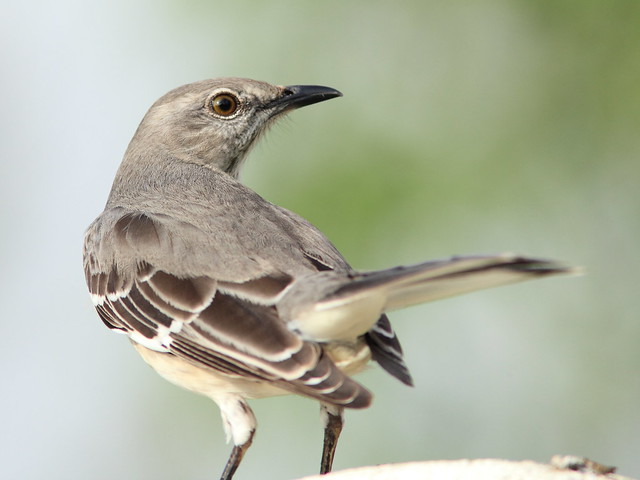
Gray Catbird:

Before I took up photogrpahy I saw Long-billed Thrashers in south Texas, Crissal and Bendire's Thrashers in New Mexico, and California Thrashers in (where else?) California. Here is a Curve-billed Thrasher photographed in New Mexico:
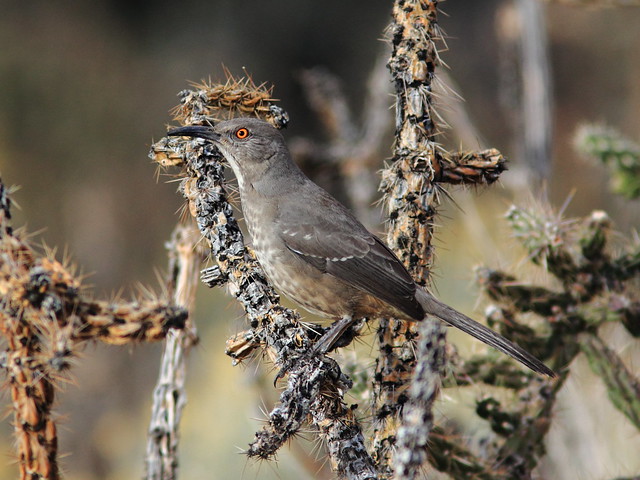
Sage Thrasher in the Texas Panhandle:

I did bring a pocket camera to California, and though I did not capture any thrashers, my favorite shot was of two of our granddaughters checking out a Redwood tree in Muir Woods.

Beautiful photographs and a fantastic blog! I would love to have you visit me at http://onepicatatime.wordpress.com/.
ReplyDeleteCarol
Hi Kenneth. The Thrasher shots are excellent and before you told us I had thought it looked a bit like a Thrush. Love the shot of the kiddies. have a great weekend.
ReplyDeletei've not seen one of these since i left wisconsin. we get plenty of mockers here, though.
ReplyDeleteExcellent images! Love the brown thrasher. You are certainly gifted in photography. :)
ReplyDeleteHi Ken. I really enjoyed your learned treatise and your brilliant photographs of the thrasher family. Until now I hadn't realised that both mockingbird and grey catbird are also thrashers.
ReplyDeleteGood luck with those two girls - looks like you'll need the steady nerve and patience you use for bird photography.
Perfect photos and interesting birds.
ReplyDeleteSuch wonderful thrasher close up images!!! Picture Post Card Perfect!!
ReplyDeleteCool post on the Brown Thrasher and the Mocker.. Cute shot of your grandchildren! Great post, Ken!
ReplyDeleteI see what you mean about the eyes! But at least they show up in a photo.
ReplyDeleteI'm always amazed by the thrashers. I have yet to see a Brown Thrasher but they strike me as a darker Sage Thrasher with a longer bill. Nice nice photos!
ReplyDeleteBeautiful photos of the birds! Cute shot of the grandkids.
ReplyDeleteI don't think I have ever seen better shot of a Brown Thrasher than those, the rest wern't shabby either.
ReplyDeleteAll the best Ken, Gordon.
The Brown Thrasher shots are fantastic. Really superb close ups.
ReplyDeleteOh fabulous captures. Beautiful close ups, love that mocking bird! Your grandees look sweet, what a huge tree!
ReplyDeleteGreat shots. I love the Brown Thrasher, but have seen one only a couple of times. Cute shot of your grandkids and the big tree.
ReplyDeleteI saw my first curved billed thrasher last year, great shots.
ReplyDeleteBeautiful birds. You are lucky to see them all.
ReplyDeleteI really enjoyed these images, I have the worst time getting to these beauties to get any good captures and yours are great!
ReplyDeleteWonderful photography with great focus of the eyes.
ReplyDeleteHowever, the granddaughter capture is by far the sweetest capture here! (Well, from a Grandma's perspective it is. ) :)
There is definitely something strange about the thrasher's flat eyes. Lovely pictures all though.
ReplyDelete